Table of Contents
Meaning of Geological Fault
Faults are fractures in the earth’s crust along which slipping has occurred parallel to the surface of the fracture. Some are clean and sharp. Many however, consists of sub parallel faults among which the total displacement have been distributed.
Geological Fault is a crack in the earth’s crust resulting from the displacement of one side with respect to the other. Typically, faults are associated with, or from the boundaries between earth’s tectonic plates.
A geological fault is a planar fracture of earth which is caused due to the movements (stretching or compression) of the earth’s crust. Stretching and compression of earth crust can cause cracks in brittle rock and forms a fault. A Geological fault is a thin zone of crushed rock between two tectonic plates which are being forced to move comparative to one another. A fault plane can be at any angle, to the surface of the earth and it may extend from a few centimeters to thousands of kilometers. When an earthquake occurs on a fault plane, the rock on one side of the fault slips with respect to the other. This slip could occur at any angle and in any directions.
One who is familiar with the term earthquake, can understand that earthquake occurs on faults i.e. normal earthquake occur on normal fault. When the earthquake occurs on one of these faults, the rocks on one side of the fault slips with respect to the other. During earthquake the surface of fault could be vertical, horizontal, or at some angle to the surface of the earth.
Classification and Types of Geological Faults
Geological Faults are classified into three basic types depending on the nature of relative motion (slip) between adjoining rocks.
The various types of faults are shown in image below:
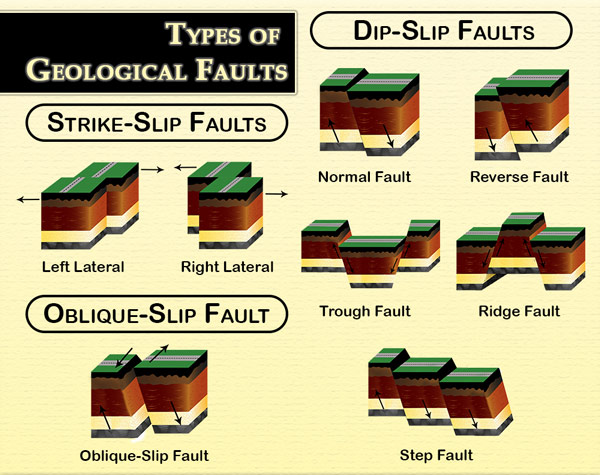
01. Strike-slip Fault
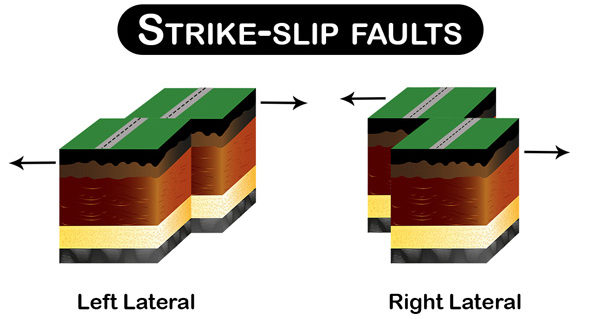
The strike-slip fault involves the right as well as left motion or movement of earth crust.
According to G.H. Girty, Department of Geological Sciences, San Diego State University, the strike-slip fault is further classified into dextral (right) fault and sinistral (left) fault. Strike-slip fault is also known as wrench fault, tear fault or transcurrent fault.
In a strike-slip fault, the motion or movement occurs on a near vertical plane, when plates on either side of a fault moves horizontally with respect to each other.
02. Dip-slip Fault

The Dip-slip Fault may occur either on vertical or horizontal motion on movement of earth crust. The Dip-slip Fault is further classified into normal fault and reverse fault. The Dip-slip Fault is developed at an angle to the earth’s surface and relative movement or motion is up-and-down.
(a) Normal Fault
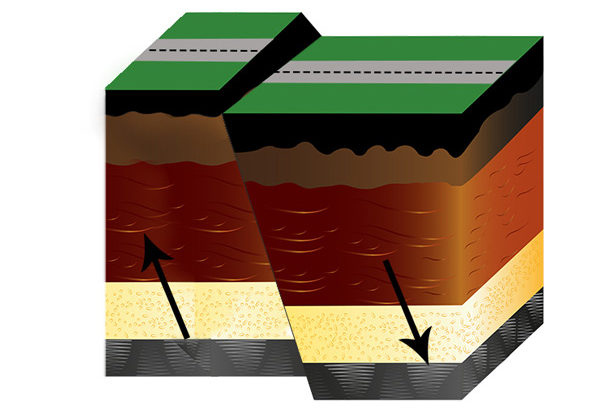
When the upper rock tries to move down, it is known as a Normal Fault. When the crust is extended, a Normal Fault occurs. It is also called as extensional fault. A downward block between two normal faults dipping towards each other is called a Graben. An upward block between two normal faults dipping away from each other is called a Horst.
(b) Reverse Fault

When the fault is opposite to normal fault, it is called Reverse Fault. The dip is greater than 45°. A thrust fault is same as Reverse Fault but the dip of fault plane is less than 45°.
In the latter case, when fault angle is near horizontal it is termed a thrust fault where pressure generated could be large and may give rise to hills.
(c) Step Fault
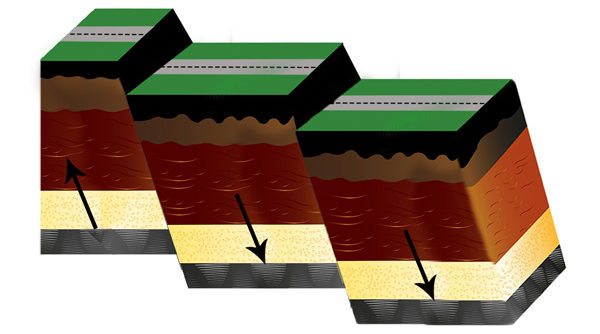
This is a fault system consisting of a number of faults with parallel fault planes, the separated blocks slipping in the same direction along parallel planes giving a step like feature. This fault is also called a fault Terrace.
(d) Trough Fault
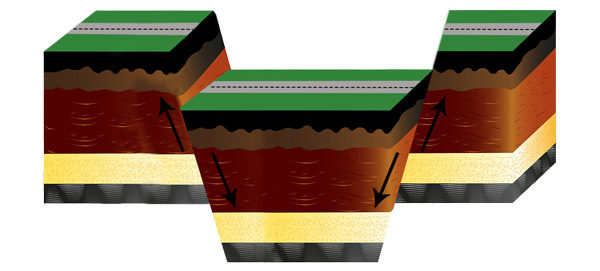
This is a fault system in which two normal faults occur whose fault planes are inclined providing a common down throw side between them. The block between the two fault planes forms along trench, called a Graben or a Rift Valley. Some Grabens are very long and also deep and may be filled with water to become a water stream.
(e) Ridge Fault

In this case two normal faults occur whose fault planes are providing a common upthrow between them. The up thrown middle wedge-shaped block forms a long ridge between the fault planes and is called a Ridge Fault.
03. Oblique-slip Fault
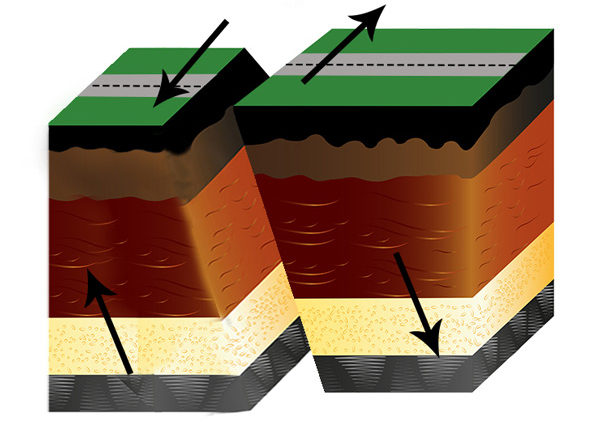
Oblique-slip Fault has a component of dip-slip fault and strike-slip fault. Generally, all faults have component of both dip-slip and strike-slip fault. It is caused by a combination of shearing and tension of compressional forces.
According to the United Nations Office for the Coordination of Humanitarian Affairs (OCHA), the various Tectonic Plates and Faults Line in Asia – Pacific are shown in below image with red colour line:
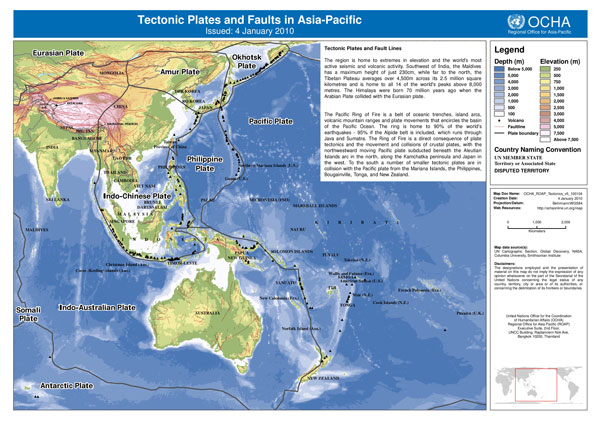
You can get the data of fault line or fault zone from the department of Geological survey of that particular country.
Geological fault cause discontinuity in earth’s crust which may influence the behavior of soil or rock masses. Hence it is very necessary to locate the fault line or fault zone before you carry out any construction work in your area. For example, in city like California, construction of new building is prohibited on or near the fault line or fault zone.
Fault Terminology
Faults are much more complex and compound features that can accommodate large amount of strain in the upper crust. The term fault is used in different ways, depending on geologist and context. A simple and traditional definition states: A Fault is any surface or narrow zone with visible shear displacements along the zone.
A fault is tubular volume of rock consisting of a central slip surface or core, formed by intense shearing and a surrounding volume of rock that has been affected by more gentle brittle deformation spatially and genetically related to the fault.
Must Read:
Tips to Protect yourself during an Earthquake!
Do’s & Don’t in Cyclone!
Definition and Example of Natural Hazards!
Image Courtesy – Image 10